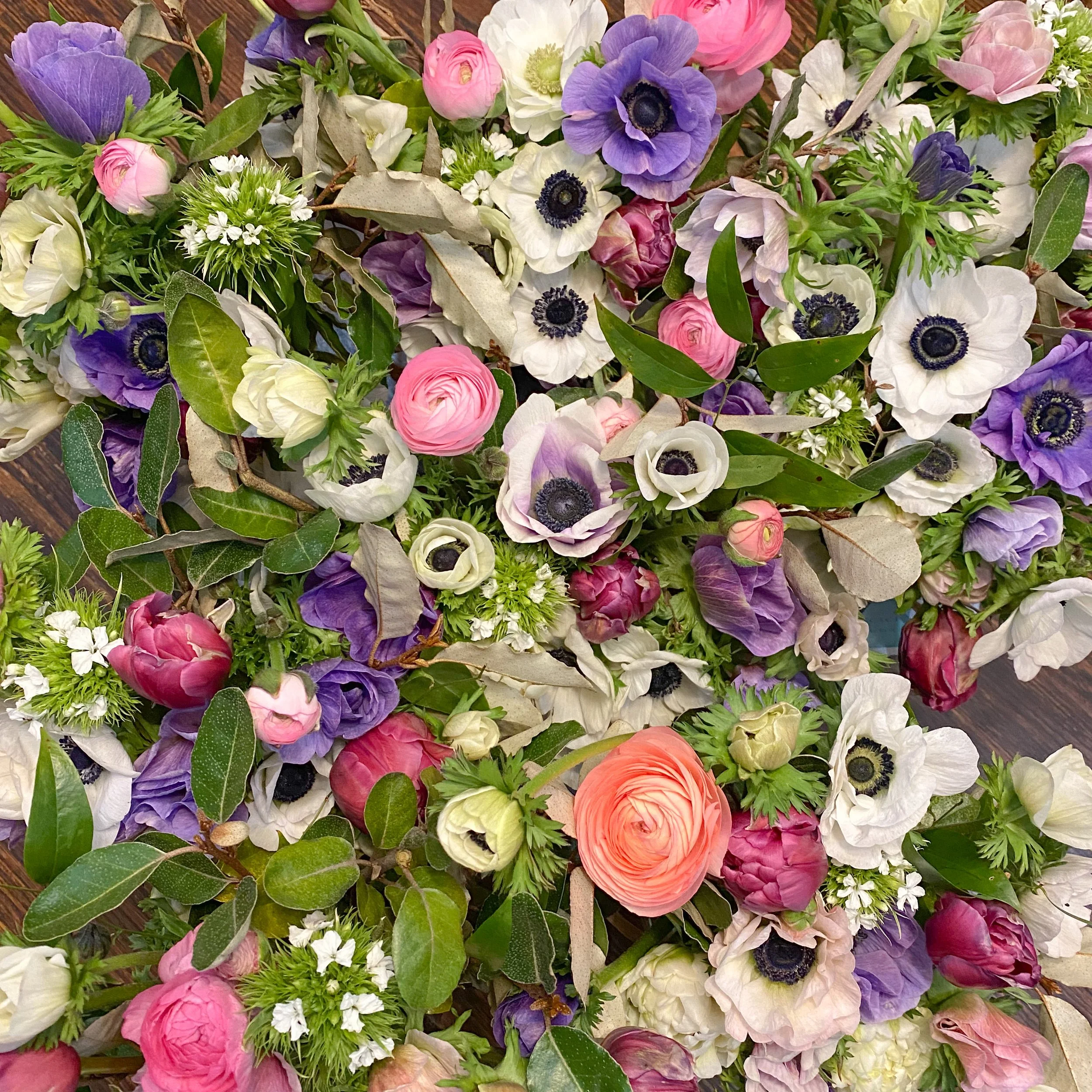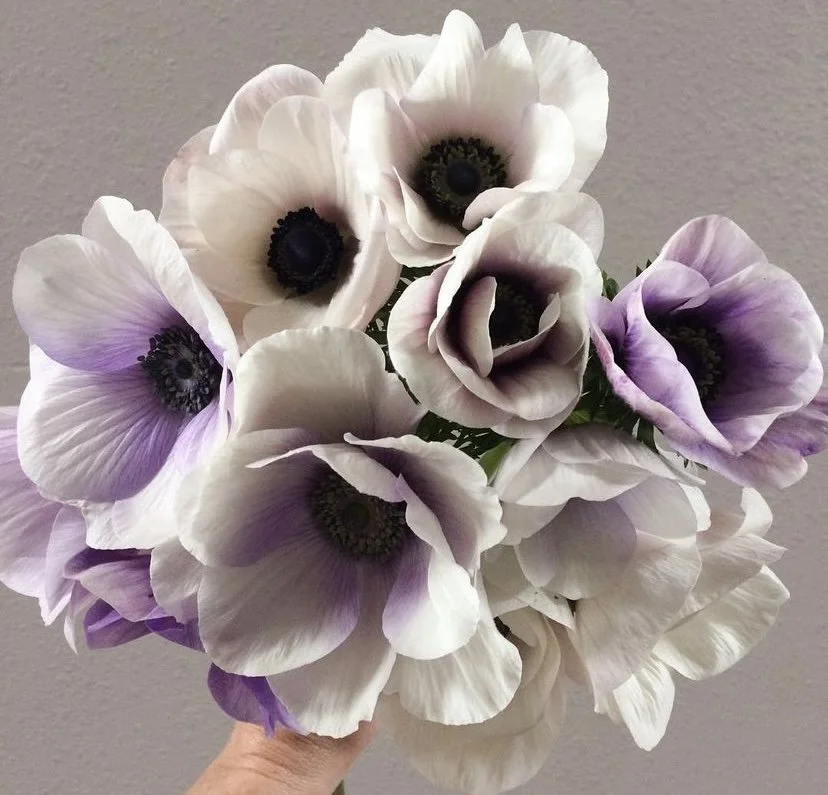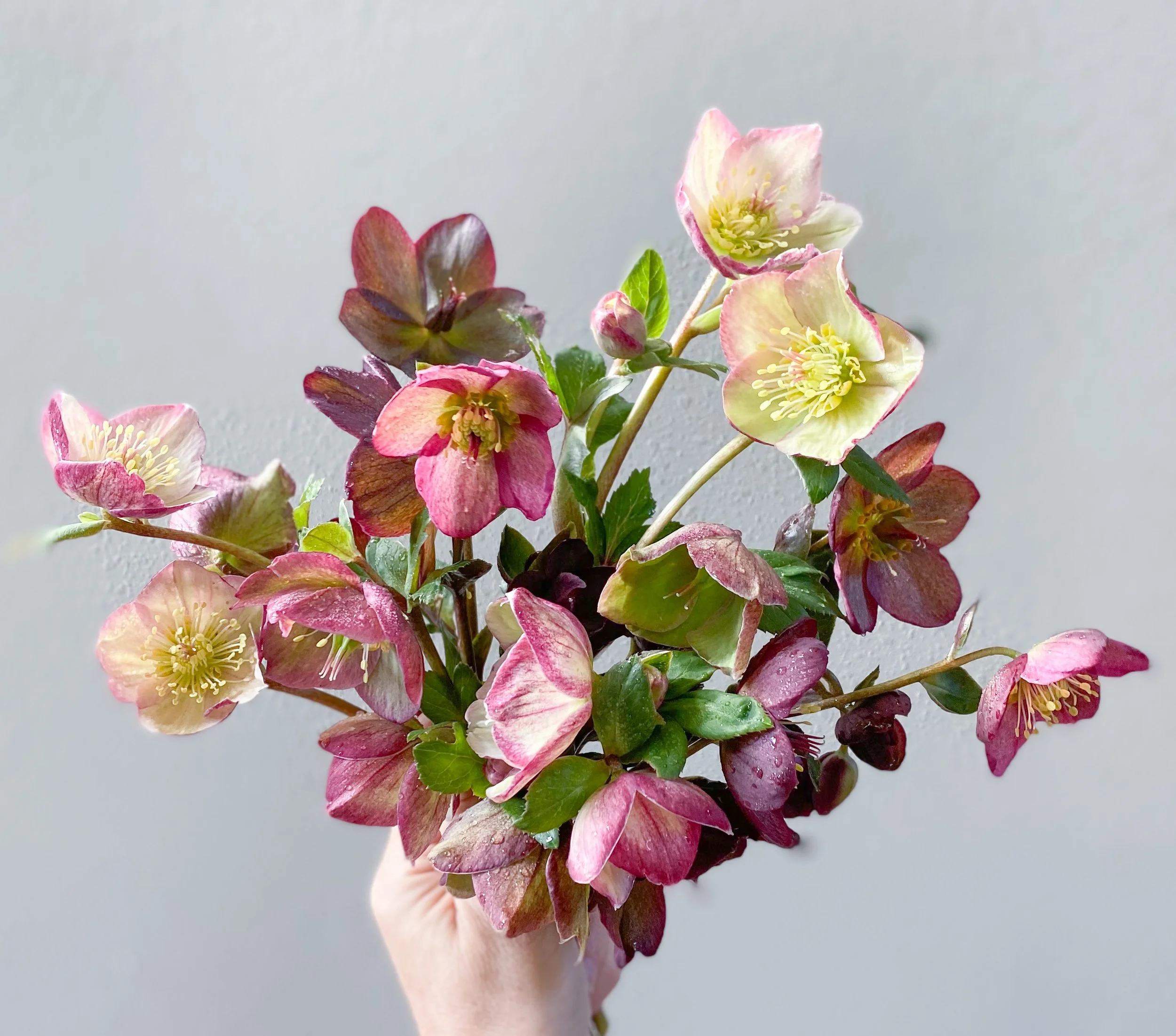3 Swoon Worthy Late Winter Flowers
Before the garden wakes up in Spring, do you crave beautiful flowers?
I’m right there with ya! When everything is brown and gray outside, I start itching to see new, green growth everywhere.
But before all the green growth of Spring starts, there are a few late winter flowers that help bridge that gap between Fall and Spring. I really think you should know about them!
Anemones
Pastel Anemones
Anemones are beautiful and come in a variety of shades. We grow white, pastels, blue, and red.
Fun Fact - Many people think that our red anemones are poppies. But anemones and poppies belong to two completely different families!
Anemones are grown from corms. I preorder our anemone corms from our supplier in the spring to make sure that I can get the varieties I want before they’re sold out. They’re delivered sometime in the fall, usually late September.
When I’m ready to start anemones in the fall, I soak the corms for several hours. I try to start our red anemones as early as possible to have them blooming in time for Christmas orders. After soaking, I put them in shallow trays with moist soil and let them presprout in a cooler that’s set at 50-55 degrees. They take 1 - 2 weeks to presprout. Then they are planted in our high tunnel.
Anemones can be grown outside in our zone (7b). When grown outdoors, they will require some protection during the coldest part of winter. We use Agribon frost cloth on our plants that are grown outside if the temperature gets below 25 degrees.
When anemones start blooming, they have short stems. As they continue to bloom, the stems get longer and longer. I cut them after they get some color, but before they fully open for the longest vase life.
Anemones are so fun to watch after they’re cut. The stem keeps growing in the water and the bloom changes each day. Anemone blooms close as the sun goes down and open when the sun comes back out. They do the same thing in the water after they’re cut. When they’re in the dark in the cooler, the blooms stay closed and when I bring them out into a lit room, the blooms open up.
2. Ranunculus
Ranunculus
Ranunculus are gorgeous late winter bloomers.
Our ranunculus usually bloom mid February through March. Ranunculus are more finicky and trickier to grow in our climate than anemones. I have grown them outdoors and protected them in the coldest part of winter, but they do much better growing in the high tunnel.
We grow regular ranunculus in a variety of colors, and also butterfly ranunculus. My favorite variety of butterfly ranunculus is ‘Ariadne’, a blush/pink hue that blends with almost everything and is perfect for Spring wedding work.
Ranunculus is not heat tolerant, so we have a short blooming period. The temperature in our climate warms up really quick in the spring and the ranunculus are usually done blooming for us by late March. It’s been difficult finding the perfect growing conditions for them here but I keep trying to figure it out because they are so beautiful and such a welcome sight in late winter and early spring. The butterfly ranunculus seem to have a better tolerance for heat, but the corms are also much pricier to purchase, and therefore, cost much more to grow.
Butterfly Ranunculus ‘Ariadne’
3. Hellebores
‘Ice N Roses’ Hellebores
These beautiful and very special flowers bloom in winter. For us, the bloom period for hellebores depends a lot on the weather. If we have a mild winter, they bloom earlier than when we have severe winter weather.
Hellebores grow best in partly shady conditions. You’ll find them, many times, in woodland gardens underneath trees.
The varieties pictured here are ‘Ice N Roses’ in various shades. The ‘Ice N Roses’ series of hellebores are relatively new and have been bred to grow taller than previous hellebores, and produce an abundance of flowers per plant.
I have only been growing the ‘Ice N Roses’ series for the past year, so I am excited to see how large they become and how many blooms they will have when they’re mature.
Hellebores have a tendency to wilt if cut when freshly bloomed. There are two ways to prevent this. Either cut the stem when the bloom has matured a bit and the seed pod has developed, or condition the stem after it has been cut. To condition the stem, dip the stem in hot, almost boiling water for 30 seconds, then remove and place in cool water.
Anemones, Ranunculus and Helleborus are some of the first flowers that bloom for us in late winter and early spring. We always look forward to sending them out in our first CSA deliveries of the season, during the first week of March!
I hope that you enjoyed this information. If so, share it with a friend! And keep on smiling flower friend!




